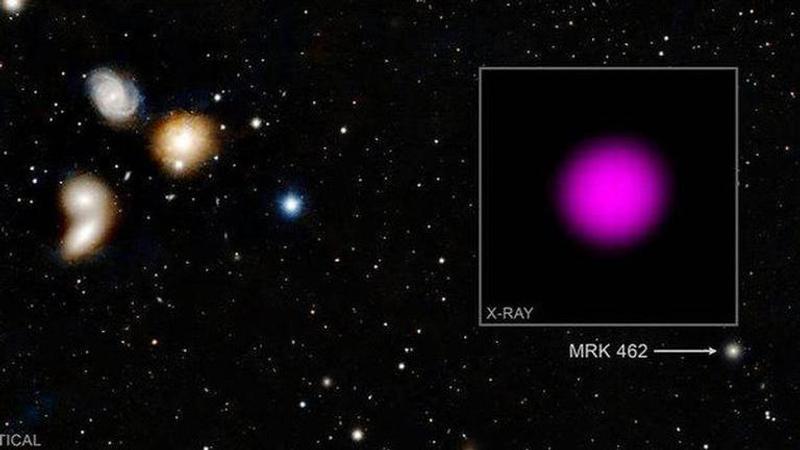Published 15:34 IST, January 11th 2022
Supermassive black hole found buried in dwarf galaxy; NASA says it could solve mysteries
NASA says that this discovery of this hidden massive black hole can help scientists unravel the mystery around the growth of the biggest black holes.

Astronomers using NASA's Chandra X-ray Observatory have discovered a supermassive black hole buried in gas and dust of a dwarf galaxy named Mrk 462. According to NASA, the black hole is about 200,000 times the mass of the Sun and it is one of the first instances when scientists have found a dwarf galaxy housing an obscured supermassive black hole. A galaxy is labeled dwarf when it is smaller in size and has just several hundred million stars as compared to other galaxies containing billions of stars.
Astronomer and co-lead researcher Jack Parker of Dartmouth College said as per NASA, "This black hole in Mrk 462 is among the smallest of the supermassive, or monster, black holes. Black holes like this are notoriously hard to find".
Discovery could help unravel a mystery, say scientists
A recent report by NASA suggests that this discovery of this hidden massive black hole can help scientists unravel the mystery around the growth of the biggest black holes. Another reason why this finding is significant is that it is really cumbersome to detect black holes in a dwarf galaxy because they are too small and dim for most current instruments to detect them. In contrast, scientists locate black holes in a standard size galaxy by just looking for the rapid motions of stars in the centers of galaxies.
As for the discovery of the new supermassive black hole, astronomers used the Chandra Observatory to scan eight dwarf galaxies, which according to NASA previously showed signs of black hole growth. However, the scientists just focused on one of the eight, Mrk 462 as it was the only one to show an x-ray signature and hinted at being buried under a heavy dust cloud. "Because buried black holes are even harder to detect than exposed ones, finding this example might mean there are a lot more dwarf galaxies out there with similar black holes. This is important because it could help address a major question in astrophysics: How did black holes get so big so early in the universe?”, co-lead researcher Ryan Hickox said in a NASA statement.
Existing theories suggest that there are black holes that can grow billions of times greater than the sun when the universe is less than a billion years old, however, these theories are unable how they can gain such size in such a short time (relatively). The discoverers say that further research on their recent discovery might help them determine how exactly that happens.
Updated 15:34 IST, January 11th 2022



